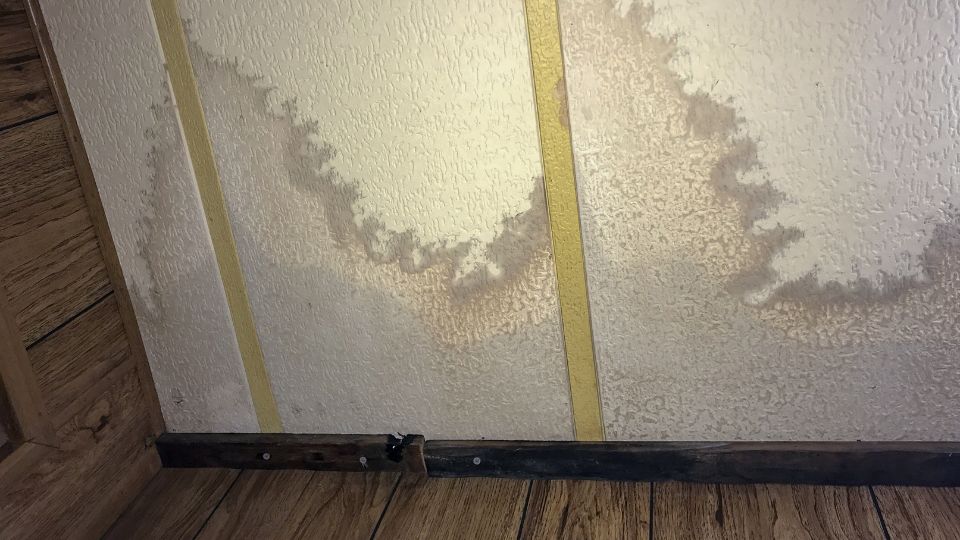
by Mold-B-Gone | Apr 11, 2023 | Mold Facts
If your house has experienced water damage, then there are a lot of issues that you might be facing right now. It can be time consuming and costly to repair siding, roofing, walls, appliances, and other items around your home.
However it can be even worse than that. If you don’t have a professional inspector at home for potential mold presence, then it can grow quite quickly after water damage occurs.
Mold loves damp, dark spots. So let’s talk about “how long does mold take to grow after water damage” and how to resolve the issue as soon as possible. That way you can restore your home to its natural beauty and avoid spending time and hassle dealing with this pesky fungus.
Why To Check For Mold After Water Damage
In this section, let’s talk about the dangers of house mold due to water damage and why it’s something that you shouldn’t play around with. There are several reasons that mold needs to be treated the second that you notice it.
Asthma and respiratory conditions
Mold mildew and fungi have spores. These spores get into the air. Once it circulates within the air inside your home, it can get into your lungs. If anyone in your family has asthma or another breathing condition, it can worsen their condition.
It can even cause severe illness or death. Even if you don’t already have some kind of allergies, it can still affect your respiratory system and cause pneumonia. This is one of the main reasons why mold should always be dealt with immediately.
Wall damage
From wallpaper to drywall to other types of materials, mold can be very damaging to your home. Ultimately, it rots and eats away at the materials in your home. This extends to carpets, wood floors, and other types of materials as well.
It’s much more costly to let mold run free than it is to fix it while it’s still small. The longer you wait, the more costly the repairs and replacements are going to be. So call Mold-B-Gone today and get mold removed if you notice any signs of it.
Mold can spread
While you may only notice mold in a small part of your home, like the garage or bathroom, that doesn’t mean it will stay there. Mold is incredibly infectious. It can spread very rapidly, especially if there’s water damage.
Mold thrives off of moist environments. So as long as there is water within your home, it has a means to reproduce and spread to the rest of your home. Like with many things, prevention is better than cure.
That being said, now that you understand the dangers of letting mold run its course, let’s talk about how long it takes for mold to actually form if you have water damage in a building.
How Long After Water Damage Does Mold Grow?
The mold colonies and microorganisms can grow rapidly. In fact, it doesn’t even take several days or weeks for it to grow. Many times mold can begin growing and germinating in the first 24 to 48 hours after water damage.
Mold colonies grow quickly with each passing hour due to the level of moisture. If you wait past the initial 48 hours, it becomes exponentially more difficult to get rid of the mold.
So the answer to “how long for mold to grow after water damage” is “really fast.” That’s why calling a professional mold removal service should be your first priority.
How To Remove And Prevent Mold?
If you notice a musty smell, moisture, cracking, peeling, or discoloration, then you probably have mold. If that’s the case, then there are a few things that you can do while you’re waiting for the experts to arrive.
Use a dehumidifier
This helps dry out porous surfaces where the mold likes to fester. Replace plaster and insulation. Porous materials should be replaced since they’re probably already compromised.
Remove water soaked items
Anything that’s been soaked or damaged with water should be removed and replaced in the home.
Scrub surfaces with disinfectant
Your tile, wood, and other surfaces should be scrubbed thoroughly to remove traces of the small spores.
Ventilate the area
Close the windows and put a fan on high. The more clean air that comes through, the less moist the area will be.
How Soon Does Mold Grow After Water Damage – Summary
If you feel like you might have mold or you do see clear signs of mold in your home, then take action. Reach out to Moldbgonega.com.
The mold removal company in Atlanta can inspect your home and take the necessary precautions to remove any signs of this dangerous fungi. You and your family deserve to breathe clean air and not worry about mold hazards or damage anymore.
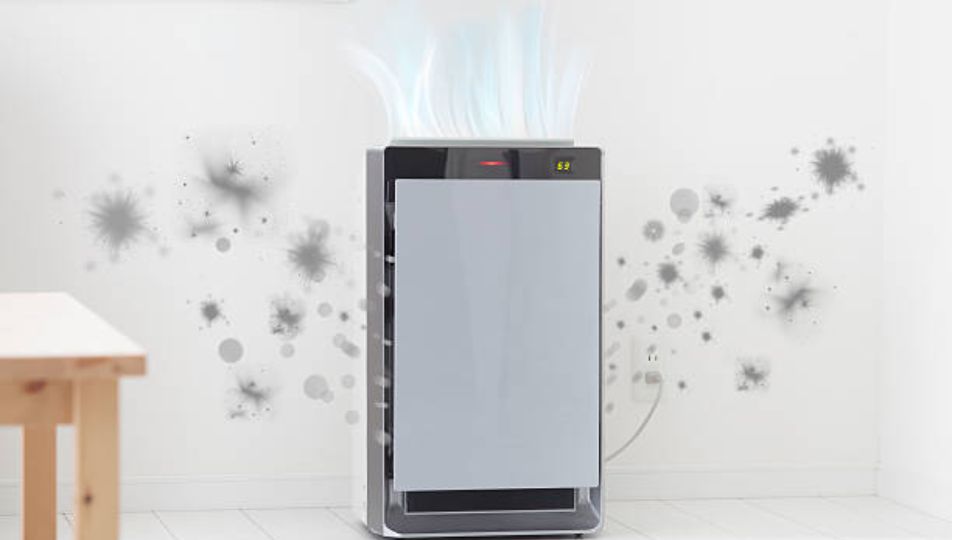
by Mold-B-Gone | Mar 13, 2023 | Black Mold, Mold Facts
When it comes to mold, it is one of the biggest problems that homeowners face today. All types of mold can find its way into your home and stay around unnoticed. By the time you notice it, it probably means there’s much more mold hidden behind the scenes.
You might be wondering, do air purifiers help with mold? Well, in this article, let’s answer that question as well as talk about the importance of removing mold from your premises.
Do Air Purifiers Help With Mold?
You’ve probably heard a lot about these machines. So what’s the deal? Can air purifiers help with mold at all?
The answer to this question is yes, to an extent. However, like anything, they need to be properly maintained and cleaned. Even if you have an air purifier, mold can find its way into other areas of your house.
Mold is pretty sneaky, along with other facts about mold you might not know.
Do Air Purifiers Remove Mold? It Depends
Mold can get into your crawl space, your living room, your bathrooms, your ducts, and more. Keeping your home mold free certainly has a lot to do with reducing the humidity, but oftentimes it’s not enough.
Water damage, rain, leaks, and other things that you may not even be aware of can cause mold in your home. So therefore, the question of do air purifiers help with mold is difficult to give a straight answer to.
It’s sort of like asking if a band-aid can help a cut. Of course it can help, but depending on how deep the cut is, you may need an expert to take a look and help you further out.
A better question than “can a air purifier help with mold” is actually this:
“What is the best way to get rid of mold in my home?” And the answer to that is to hire professional mold removal experts in Atlanta.
That being said, here are the top reasons to consider mold removal services for your home.
The Benefits of Mold Removal Services
Identification
You may not be able to identify what kind of mold you have in your home. Mold ranges from benign and annoying to toxic and deadly.
Only expert mold removal specialists can tell you which one it is and properly clean your home to kill the mold and keep it from coming back.
Mold Is Difficult To Clean
You have to use the right chemicals, methods, and equipment to clean mold. Otherwise the spores will stick around and keep spreading.
Air Purification Is Not Enough
Air purifiers are excellent tools. However, they simply keep the spores from spreading around your home. If the spores are there in the first place, the mold has everything it needs to reproduce.
What’s The Best Air Purifier For Mold?
HEPA (High Efficiency Particulate Air) filters are effective for mold. They have high efficiency standards and capture over 99.9% of particles that are bigger than 0.3 microns.
Does A Hepa Filter Remove Mold?
This is a helpful type of purifier to have in your home. It can be a great starting point to reducing mold around your property. Your mold specialist can tell you more about it during your appointment.
Do Air Filters Help With Mold? – Final Conclusion
If you think you might have mold in your home, don’t hesitate any longer. It can cause health hazards and it almost never goes away on its own — even with air filters. Call the professionals at Mold-B-Gone today.
Let this expert mold removal service in Atlanta clear the mold from your home and ensure you and your family are breathing safe, fresh air.
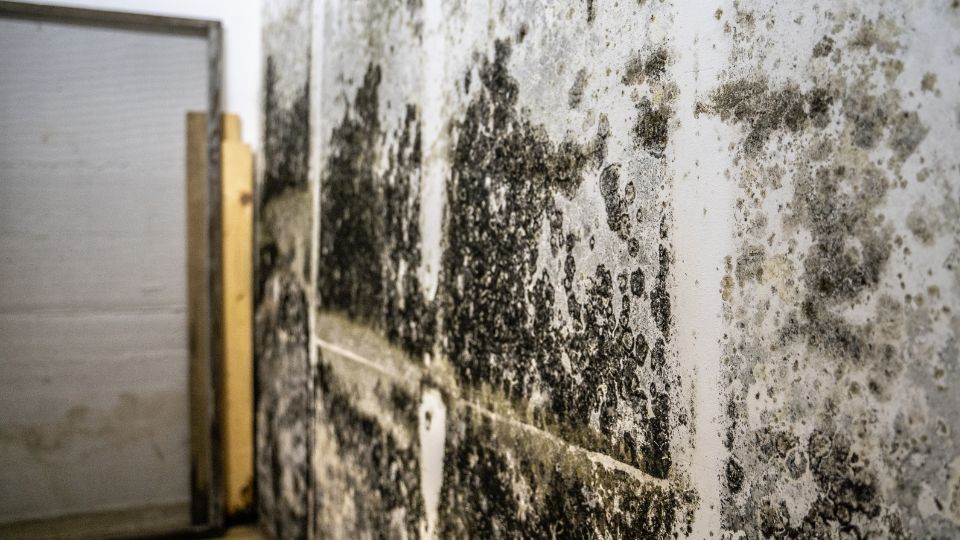
by Mold-B-Gone | Mar 6, 2023 | Black Mold, Mold Facts
If you have mold behind your walls, it can cause several issues. It’s not just unsightly, it also damages your property. Additionally, it can cause health hazards and even be deadly.
Therefore, if you think you might have mold, don’t take the risk. Have Mold Removal Experts in Atlanta come and remove it today. That being said, what are some signs that you have mold behind your walls?
Signs That You Have Mold Behind Your Walls
Here are some common signs of mold behind drywall and other materials. If you notice black mold inside walls call mold experts immediately:
A Musty Smell Means There’s Mold Behind Drywall
Many types of mold have a musty odor about them. It makes your house have that basement odor. This means that there’s fungi somewhere in the walls or in your house.
If that’s the case, you should have mold removal specialists come and take care of it.
Your Wallpaper Is Peeling
Mold loves humidity. If your wallpaper is peeling, it probably means there’s enough humidity in the air to provide mold as well.
It’s a perfect combination for fungi to grow. So there is likely mold behind drywall sections.
Water Stains
Water stains mean that there’s water damage or leaks somewhere in your home. Anywhere you’ve seen water stains, there’s a good likelihood of some kind of mold growing.
This is one of the biggest tip offs when it comes to how to test for mold behind walls. It’s definitely something you should have checked out.
Spots On Your Walls
Small dark spots of brown or black, even fuzzy white indicate mold colonies. Sometimes you don’t even have to know how to check for mold behind a wall, it’s on the frontside in plain view.
Molds come in a variety of colors, so it’s best to have professionals tell you what variety it is. Therefore, they can get rid of it and keep it from growing back.
Health Symptoms
If you have symptoms like allergies, runny nose, sneezing, coughing, or illnesses, then this is something to take note of.
You shouldn’t be feeling that way in your home. Often these are signs that you have mold in the house that’s causing these allergies. If left unchecked, it can cause more advanced illnesses. You want to find out if you have mold behind your walls right away.
Mold Evaluation
Mold testing is the best way to see if you have mold. Experts at Mold-B-Gone in Atlanta have mold kits and various ways to test for every kind of mold there is. They can tell you how much mold there is, what type of mold it is, and what to do about it.
That way, they can go about removing the mold from your home and keeping you and your family safe.
How To Remove Mold From The Home
There are a couple ways to keep mold out of your home:
Use An Air Purifier
Try to keep your air free of microns and particles. This is how the fungi spores spread in the air.
Check For Leaks Or Water Damage
Avoid excess moisture in your home. Mold can often occur in basements, bathrooms, kitchens, or anywhere where pipes are present.
Contact Mold Removal Experts
Mold is no laughing matter. If you think you might have mold in your home, have the experts perform a preliminary check. If necessary, they can perform mold removal in a way that kills the mold spores.
They can also advise you on ways to make your home mildew and mold proof going forward.
Summary — How To Check For Mold Behind Walls
If you have mold, especially in the humid environment of Georgia, the problem is only going to get worse.
The smell, sight, and allergy symptoms make it obvious if you have mold. It can cause health issues, property damage, and more. Don’t hesitate to find out with certainty if there’s black mold or other varieties.
Contact the mold removal experts today at Mold-B-Gone. That way you can have peace of mind that that nasty fungi isn’t coming back any time in the near future.
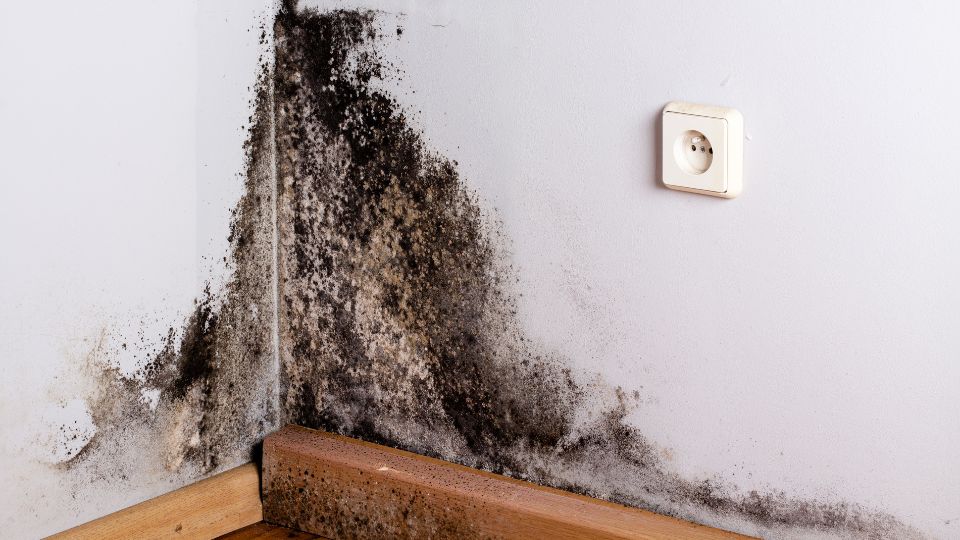
by Mold-B-Gone | Feb 21, 2023 | Black Mold, Mold Facts
Mold is regularly idea of as a hassle that solely impacts homes. However, the reality is that it can additionally be extreme trouble for businesses. Mold can reason more than a few fitness issues uncovered in humans, and in some cases, it can even be deadly. That’s why it is necessary to comprehend what black mildew is and what you should do if you suppose you have a mildew problem.
Read more: What Does Black Mold Smell Like?
We will talk about the risks of black mildew and the signs you have to appear out for. We’ll additionally suggest how to forestall mold from developing in your business.
What Is Black Mold?
Black mold is a fungus that can be located both indoors and outdoors. It’s most frequently related to solid and musty odors, and it usually seems like black, green, or white spots on surfaces such as walls, ceilings, floors, and furniture. Sometimes these spots are visible, and the scent is detectable.
When inhaled, black mold spores can cause many troubles, ranging from coughing and sneezing to pores, skin inflammation, and respiratory infections. These spores can set off allergies and reactions as they are airborne. If left untreated, black mildew can lead to long-term fitness troubles such as fatigue and depression.
Symptoms of Black Mold Inhalation
When we inhale black mold spores, the possible fitness dangers vary from slight to severe. Some of the most frequent signs related to black mold inhalation encompass respiratory problems such as coughing, wheezing, and challenging breathing; nasal congestion; throat irritation; eye inflammation together with redness and watery eyes; complications and fatigue; pores and skin rashes or irritation; and in extra extreme cases, reminiscence loss or disorientation.
People with compromised immune systems, asthma, allergies, or different lung illnesses are at a greater chance of experiencing severe issues from black mildew inhalation.
Tips To Manage Black Mold Exposure
The unique way to stop unfavorable health issues from black mildew is to keep away from it altogether. If you suspect your place has a mildew problem, there are steps you can take to limit your danger of being exposed.
- Have your place inspected: An expert contractor may also be capable of perceiving areas the mold spores are most likely to thrive.
- Keep your areas dry: Fix any water leaks and clear any spills as quickly as they occur. Reduce humidity degrees in your place using an air conditioner or dehumidifier, and leave home windows open when climate permits.
- Clean affected areas regularly: Use a vacuum cleaner with a HEPA filter to suck up as many mildew spores as possible. Clean surfaces with a moderate detergent and heated water, then dry them entirely.
- Wear the best clothing: If you’re going into a region with black mold, wear masks or respirators rated for mold protection. Also, wear gloves, lengthy sleeves, and pants to protect the skin from contacting the spores.
Following these guidelines can assist you in limiting your chance of black mold and the hazardous results that come with it. If you’re nevertheless experiencing signs after taking these precautions, talk with a health practitioner or different clinical expert immediately.
Call Mold-B-Gone Remediation for the first-class mold experts in Atlanta. We will assist you in getting the mildew out of your place so that you can remain safe. Our expert crew is right here to help!
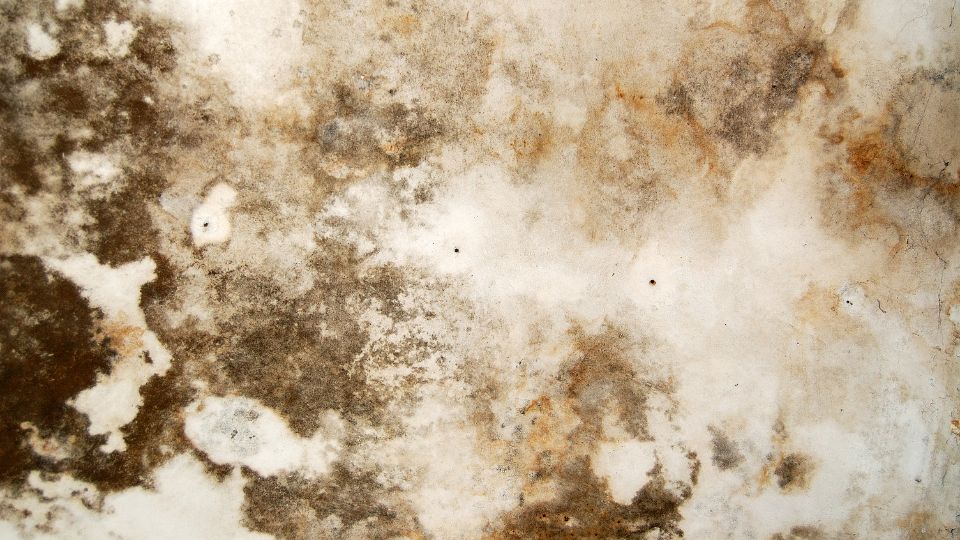
by Mold-B-Gone | Feb 7, 2023 | Mold Facts
Mold is a type of fungus that thrives in humid environments. The high levels of moisture allow mold to grow and spread so quickly. But what are the ideal humidity and temperature conditions for mold growth? And how can you prevent mold from growing in your home or office?
Read more: How To Prevent Mold?
We will discuss the optimal humidity and temperature conditions for mold growth and how to prevent it.
Reasons for Mold Growth
When it comes to mold growth, moisture is the critical component. Mold requires a relative humidity of 55% or higher and temperatures between 40 and 100 degrees Fahrenheit to survive and reproduce. Any area with these conditions is at risk of developing mold. Moisture can come from many sources, including floods, plumbing leaks, spills, condensation on cold surfaces, and rising dampness.
High temperatures can contribute to mildew due to humidity or moisture in the air. Homes with negative airflow are inclined to condensation, which presents hospitable surroundings for mildew spores to thrive. In warm climates, air conditioning and cooling structures create stipulations perfect for mildew increase as they can eliminate a lot of moisture from the air.
Mold can also grow in cooler temperatures if sufficient moisture is present. Mold spores often survive freezing temperatures, so an area that experiences extreme cold and high humidity can still be at risk of mold growth during winter.
What Temperatures Does Mold Like?
Mold prefers warm and humid climates but can grow from 40 to 100 degrees Fahrenheit. It is important to note that mold spores need a source of moisture to survive and reproduce, so even in colder climates with high humidity levels, the potential for mold growth exists.
Tips To Prevent Mold Growth
Mold needs moisture and the right temperature to survive and grow. Limiting the amount of moisture and maintaining proper temperatures within your home are essential to reduce the chance of mold growth.
1) Use Dehumidifiers
Mold wants moisture and temperature to grow, so one of the best methods to stop mildew is by controlling the humidity stages in your home. A dehumidifier can assist in maintaining your home’s humidity stage between 40-50 percent, which is the ultimate for stopping fungal growth. It’s integral to empty your dehumidifier’s water tank to forestall mildew growth.
2) Keep Your Home Clean
Mold thrives on moist, organic surfaces such as soil, wood, paper, and fabrics. Keeping these areas clean can help reduce the number of spores in the air. Regularly clean your home’s surfaces with an all-purpose cleaner, wiping down walls and floors to remove excess water—vacuum carpets and rugs regularly since they are a breeding ground for mold spores. Also, keep your gutters clear of debris so rainwater can drain away from the house properly.
3) Ventilate Your Home
Mold needs moisture and warm temperatures to grow, so good ventilation prevents mold growth. Ensure all your doors and windows have weather seals to prevent excess moisture from entering your home. In addition, use air conditioners and exhaust fans to cool down the environment and keep humidity levels low.
Following these steps can help prevent mold growth and keep your home healthy. Call Mold-B-Gone Remediation for the best mold specialist in Atlanta. We specialize in mold removal and can inspect your house for potential issues to give you peace of mind. Contact us today to get started!
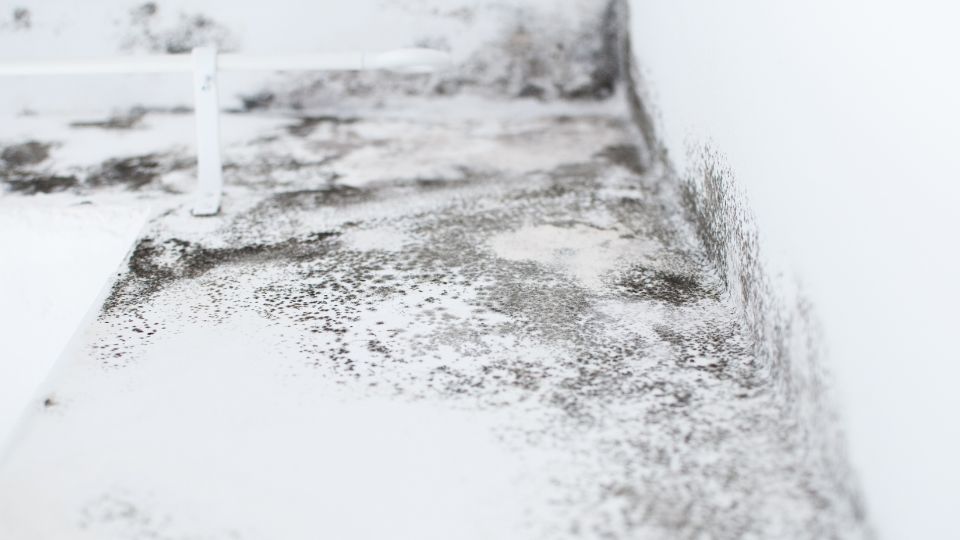
by Mold-B-Gone | Jan 17, 2023 | Mold Facts
Mold is a fungus that grows almost anywhere there is moisture and organic material. In some cases, mold can grow on concrete. While it is not as common as mold growth on other materials such as wood, carpet, or drywall, it can still happen.
Mold growth happens faster in the presence of moisture, which can come from a flood, leaky roof or pipes, or other forms of water intrusion.
Read more: How Long Does It Take for Mold To Grow?
If you are concerned that your concrete may be infected with mold, there are several steps you can take to investigate and remove the problem. We will discuss what mold is, how it grows on concrete, and some steps you can take to remove it.
Why Does Mold Grow on Concrete: Reasons
Mold growth on concrete is a common issue that can cause damage to the building structure and pose health risks for those living in or near the affected area. It is essential to understand what causes mold growth on concrete and how to prevent it from occurring to protect your home or business from potential harm.
1) High Levels of Moisture
One of the most common reasons mold grows on concrete is its high moisture content. Concrete is porous, meaning water can easily seep into it, creating an ideal mold growth environment.
2) Poor Ventilation
Poor ventilation in areas with concrete can also cause mold growth. Poor ventilation can trap moisture and cause the temperature in an area to rise, creating a breeding ground for mold.
3) Leaking Pipes or Drains
Leaky pipes or drains can cause water damage on concrete that leads to mold growth. If left unchecked, this water damage will only worsen with time, increasing the likelihood of mold appearing.
4) Improperly Sealed Concrete
Concrete needs to be adequately sealed to prevent water from seeping into it. If the sealant applied is not of high quality, or if the concrete was not correctly prepped before sealing, water can easily penetrate and cause mold growth.
Tips To Prevent Mold Growth on Concrete
Mold growth on concrete surfaces is a common problem in many households. Fortunately, there are several steps you can take to prevent its occurrence.
1) Better Ventilation
Ventilation helps keep indoor moisture levels low and prevent mold growth on concrete. Ensure your home has open windows or exhaust fans to circulate air and reduce humidity.
2) Install Dehumidifiers
Dehumidifiers extract water molecules from the air, reducing moisture content and preventing mold growth on concrete surfaces. Consider investing in a dehumidifier if you live in a damp climate.
3) Clean Regularly
Regular cleaning helps eliminate accumulated dirt and debris, which can attract mold growth. Use mild detergents to clean concrete surfaces and dry them thoroughly after washing. Drying ensures no residual moisture remains, making it harder for mold to thrive.
4) Seal Concrete Surfaces
Sealing off concrete surfaces can help prevent moisture infiltration caused by rain and condensation. Apply a waterproof sealant to concrete surfaces to make them more resistant to mold growth.
Call Mold-B-Gone for the best mold removal service in Atlanta. We are experts in mold removal and remediation on concrete surfaces. We use specialized tools and cleaning agents to penetrate deep into the concrete’s pores and remove mold or mildew.
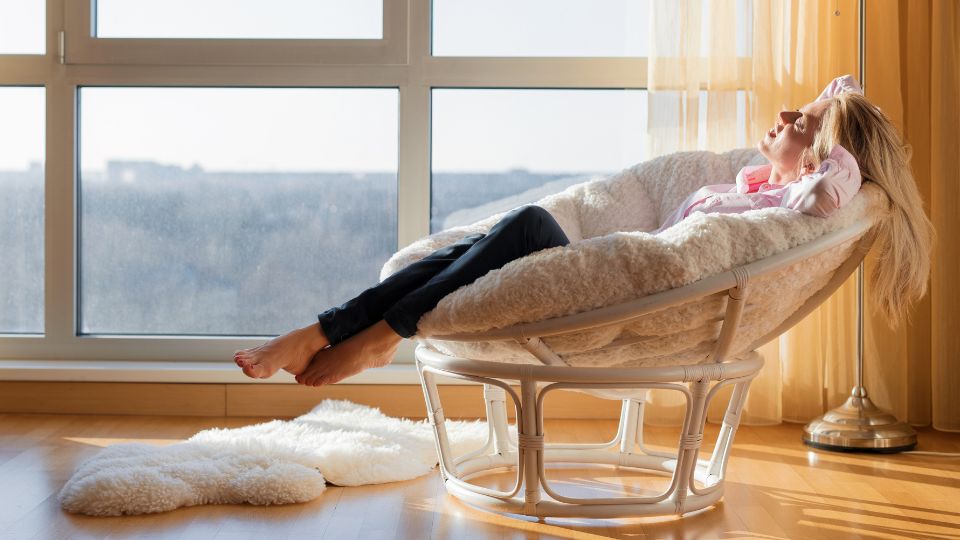
by Mold-B-Gone | Jan 3, 2023 | Indoor Air Quality
Did you know that the air inside your home can be more polluted than the outside? It’s true! Many people spend most of their time indoors, so it’s essential to make sure that the air quality is good. Indoor air quality testing involves inspecting and measuring the number of contaminants in your indoor air to ensure it is safe.
Read more: What Is Indoor Air Quality Testing?
The most common pollutants in indoor air are dust mites, pet dander, pollen, mold spores, bacteria, volatile organic compounds (VOCs), and other particulates. Read on to understand why indoor air quality matters and how to improve it.
Reasons To Maintain Indoor Air Quality
Maintaining clean indoor air quality is essential for all buildings, from residential homes to commercial businesses. Here are some key reasons why the air quality inside your home, office, or other building should be a priority.
1. Improve Health
The most important reason to maintain good indoor air quality is for the health of occupants. Poor air quality can cause various issues, from respiratory problems to tiredness and headaches. You can help prevent these issues by maintaining consistently good air quality.
2. Increase Comfort
The comfort of occupants is also essential. Poor indoor air quality can lead to stuffy and uncomfortable environments, affecting productivity and overall satisfaction with the space. Ensuring good air movement within a building will improve the comfort levels of any occupants.
3. Reduce Pollution
Poor air quality can also impact those outside of the building. Poor ventilation within a building can cause pollutants to become trapped, leading to potential health risks for those in the surrounding area. Regular indoor air quality maintenance is essential for reducing pollution and protecting the environment.
4. Lower Risk of Fire
Finally, good air quality can also reduce the risk of fire. Poor air quality can cause an accumulation of combustible particles or gases, increasing the chances of a fire occurring in the building. Good airflow and ventilation will help to prevent this from happening.
Tips To Improve Indoor Air Quality
Indoor air quality is essential for the health and well-being of those inhabiting a particular space, so it’s essential to improve it. Here are tips on how to do this:
1) Improve Ventilation
Ventilation is one of the most important things you can do to improve indoor air quality. Installing ventilation systems, like mechanical or natural ventilation, helps bring fresh outdoor air into your building or home. This helps reduce levels of pollutants and moisture, which can cause health problems. Additionally, ensure all windows and doors are properly sealed to ensure no outside pollutants are getting in.
2) Use Air Filters
Air filters are designed to remove pollutants from the air and help improve indoor air quality. Invest in high-quality filters designed for your HVAC system, and replace them regularly. Additionally, consider using air purifiers or ionizers to capture additional pollutants and improve air quality.
3) Better Insulation
Proper insulation helps reduce air leakage in your home or building, which can help prevent pollutants from entering. Ensure that the walls, ceilings, and floors of your building are adequately insulated to keep the air clean.
It is essential to improve indoor air quality to benefit those living or working in any given space. Call Mold-B-Gone for the best indoor air quality testing and mold inspection in Atlanta. With the help of our knowledgeable staff, you will be sure to have a healthier home environment in no time!
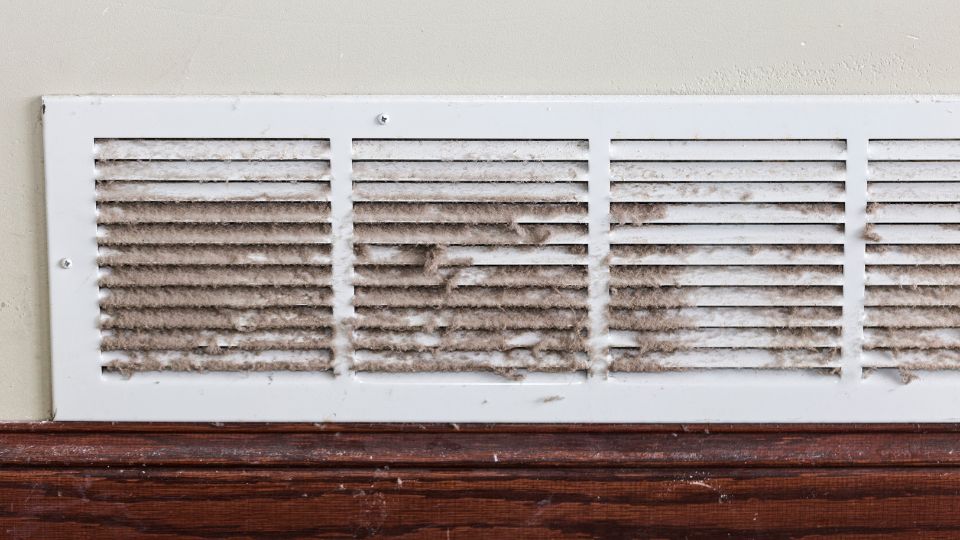
by Mold-B-Gone | Dec 13, 2022 | Mold and Infants, Mold Facts, Mold Inspection
Duct cleaning is an often overlooked but essential part of home maintenance. Many people don’t think about it until they start experiencing problems like allergies, asthma, or even higher energy bills.
Duct cleaning has many benefits because it not only improves air quality but also helps reduce energy costs.
Read more: Top 15 Reasons To Clean Your Ducts!
If you’re unsure whether or not your air ducts need to be cleaned, read on for the signs that you should call in the professionals!
1) Dusty Grills
The grills are the first place to look for signs of dirt. If you can easily spot dust and debris on the grills, it indicates that your air ducts need cleaning. Professionals use tools like high-powered vacuums and brushes to remove the dust build-up and can access tight spaces.
2) Mold Growth
If you notice that your air ducts have a musty smell or signs of visible mold growth, this indicates that the airflow in your home has been compromised and should be addressed immediately. Cleaning your air ducts will help reduce any mold problems and improve the overall quality of indoor air.
3) High Humidity
High humidity levels in your home can worsen asthma and allergy symptoms. It can also lead to mold growth, spreading through the air ducts if not kept in check. If you notice high humidity levels in your home, it might indicate that your ducts need to be cleaned. Humidity causes problems inside the ducts, leading to dust and debris build-up. This build-up creates an ideal environment for mold growth and can cause a musty smell in your home that’s hard to ignore.
4) The Air Filters Are Dirty
The air filters in your HVAC system should be changed every three months or so, depending on the type of filter and how often you use it. If these become clogged with dirt and debris, it can lead to poor airflow from the registers. This indicates that your ducts have built up dust and dirt and should be cleaned.
5) Mold Is Present
If you notice any visual or odor of mold, your ducts are likely harboring the spores. The air circulating through your home picks up these spores and spreads them throughout the system. This can cause problems for anyone in the home who has allergies or asthma. Contact a professional to have the ducts cleaned and any mold removed.
6) Unusual Sounds Coming From Your System
If your vent system is making odd noises, like rattling or squeaking, it likely means a blockage somewhere in the line. This could be due to debris buildup, which could lead to an increase in airflow resistance. This can cause high air pressure and make strange noises you may hear. Have your vents inspected if you hear any odd sounds coming from them?
7) Higher Energy Bills
When dust, dirt, and other particles build up in ducts, the system has to work harder to circulate air throughout the house. This requires more energy and can lead to an increase in energy costs. The U.S Department of Energy recommends regularly cleaning and inspecting air ducts and other parts of your HVAC system to reduce overall energy consumption.
Call Mold-B-Gone for the best duct cleaning in Atlanta. We can help keep your air clean and your home safe.
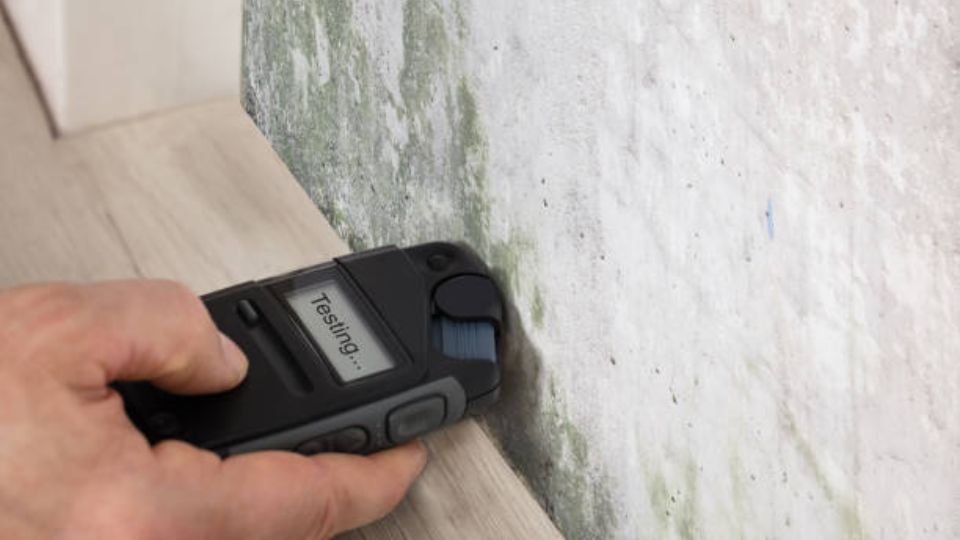
by Mold-B-Gone | Dec 6, 2022 | Mold Facts, Mold Inspection
Mold can be a severe issue in any home. Not only is it unsightly, but it can also cause health problems for you and your family. If you have mold in your home, it’s essential to test for it as soon as possible.
Some signs that indicate the presence of mold in your home include a musty smell, visible growth on walls and ceilings, and water damage.
Read more: How Do I Know If Mold Is Growing In My Basement?
There are several different ways to test for mold in your home. We will discuss how to test for mold and what to do if you have a problem with mold in your home.
1. Determine If You Have a Mold Problem
Mold growth happens when there is an excess of moisture in the air or on surfaces. A dripping roof, plumbing leaks, and condensation can lead to mold growth. Inspect your home’s walls, ceilings, windowsills, and floors for discoloration or any visible signs of mold. If you do see signs of it, or if your home smells musty, it is time to inspect further.
2. Collect Samples for Testing
Experts in mold testing use different methods to find and collect samples. These include:
a) Air Sampling:
This involves collecting a sample of air and sending it to the laboratory for testing. The air sampling procedure can be used in different house parts, such as near HVAC ducts or other areas where mold may be present.
b) Swab Sampling:
Swab samples are taken by rubbing a sterile swab on non-porous surfaces, such as walls or floors. The sample can then be sent to the laboratory for further testing.
c) Bulk Sampling:
This involves collecting a physical sample of the material that may be contaminated with mold and sending it to the laboratory for analysis.
3. Test the Samples for Mold
Testing mold samples requires specialized kits, or you can send the samples to a laboratory for analysis. Be sure to follow your chosen method’s instructions carefully and note any information unique to your particular situation.
4. Interpret the Test Results
Mold growth found in your home should be tested and identified to determine the best course of action for remediation. It’s important to understand that a professional mold inspector or testing company can help you interpret the results so you can make informed decisions on how to address the problem.
The test kits available at hardware stores include easy-to-follow instructions, but these tests need to assess the type or amount of mold growth accurately. For this, a professional lab will be necessary to provide a detailed report of what types of molds were found and the levels they were present.
5. Take Action Based on the Results
Mold remediation involves both the removal of existing mold growth and the prevention of future mold growth. If the test results show high mold levels, it is essential to take action quickly. Mold can cause health problems, such as allergies and asthma, so it should be removed immediately.
6. Maintain Your Mold-Free Environment
Preventive measures are the best way to keep your home free of mold. Take steps to reduce humidity in areas prone to moisture, such as bathrooms and kitchens, by using exhaust fans or dehumidifiers and ensuring that these areas are well-ventilated.
Call Mold-B-Gone for expert mold inspection in Atlanta. We are a certified mold remediation company with the experience, knowledge, and technology to diagnose and remove mold from your home or office accurately.
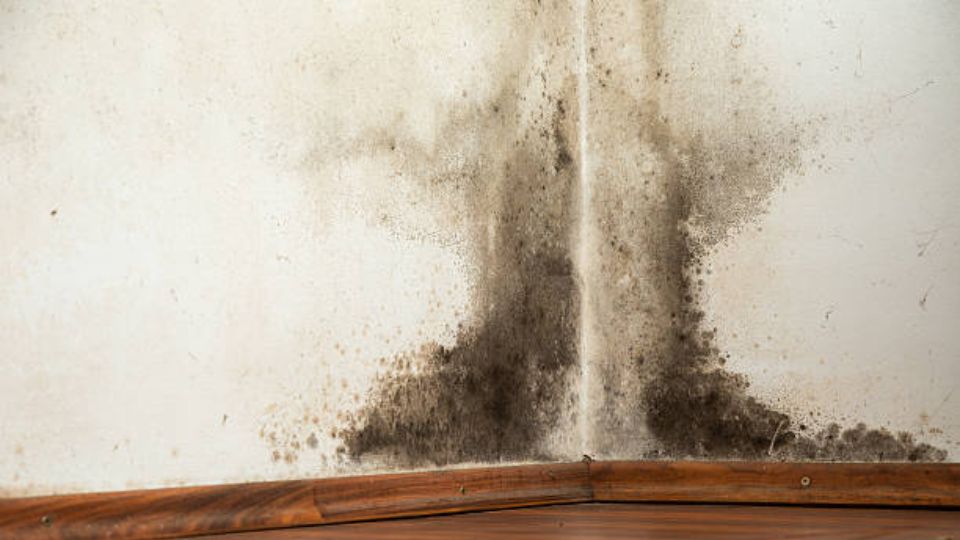
by Mold-B-Gone | Nov 15, 2022 | Black Mold, Mold and Infants, Mold Inspection
Mold can be a severe problem in homes and businesses. Not only is the mold unsightly, but it can cause health problems for people who breathe in the spores.
One of the dangerous types of mold is black mold. Also professionally known as Stachybotrys chartarum, black mold produces mycotoxins, which can cause serious health issues.
Black mold grows in damp, humid environments and can appear as greenish-black or black spots.
Read more: What Causes Black Mold?
It’s essential to understand how fast black mold grows on concrete and other surfaces so that you take the necessary steps to prevent it from taking hold in your home or business. Black mold usually starts growing in ideal conditions in 24 to 48 hours. We will also discuss health issues with black mold and factors that influence mold growth in your home or business.
What Are the Health Issues With Black Mold?
Black mold, known as Stachybotrys chartarum or Stachybotrys atra, is a fungus that can cause serious health issues if left untreated. These include:
- Respiratory problems, including coughing and sneezing, asthma attacks, and chronic sinus infections.
- Eye irritation, such as burning eyes or watery eyes.
- Skin problems, with redness and itching being the most common symptoms.
- Various neurological issues, such as headaches and fatigue.
- In extreme cases, black mold can cause nausea and vomiting.
Patients with weakened immune systems, as well as infants, children, and older adults, are especially vulnerable to its effects.
Factors That Affect How Fast Black Mold Grows
Mold only needs a few essential components to grow and thrive: moisture, warmth, food source, and oxygen. Here are the factors that can affect how quickly black mold grows:
Humidity:
Mold will grow faster in moist, humid environments. High relative humidity (RH) means more moisture is available for the mold to feed off, causing it to grow faster. Places like bathrooms and basements are typically more humid, making them ideal environments for mold growth.
Temperature:
Warm temperatures help black mold reproduce quickly. The warmer the environment, the faster it will grow. Locations with higher temperatures, such as attics, will experience faster mold growth than rooms with lower temperatures.
Food Source:
Different molds require different food sources to survive. Black mold grows on organic materials like wood and paper high in cellulose. To grow faster, it needs a consistent source of these materials.
Oxygen:
Mold needs oxygen to survive and reproduce. Without it, the mold won’t be able to grow. Black mold can also reproduce anaerobically (without oxygen) in small amounts, substantially slowing its growth.
What Should You Do While Waiting for Mold Remediation Services?
If you have noticed telltale signs of black mold in your homes, such as discoloration, musty smells, and even health issues, you may:
a) Seal off the area until a mold remediation service arrives
b) Contact your insurer and file a claim
c) Increase ventilation in the affected rooms to reduce moisture levels
d) Clean up any remaining water or spills and all porous materials (like carpeting and drywall).
Contact Mold-B-Gone for expert mold inspection in Atlanta. We have a team of certified professionals available to answer any questions about mold growth, particularly black mold.










